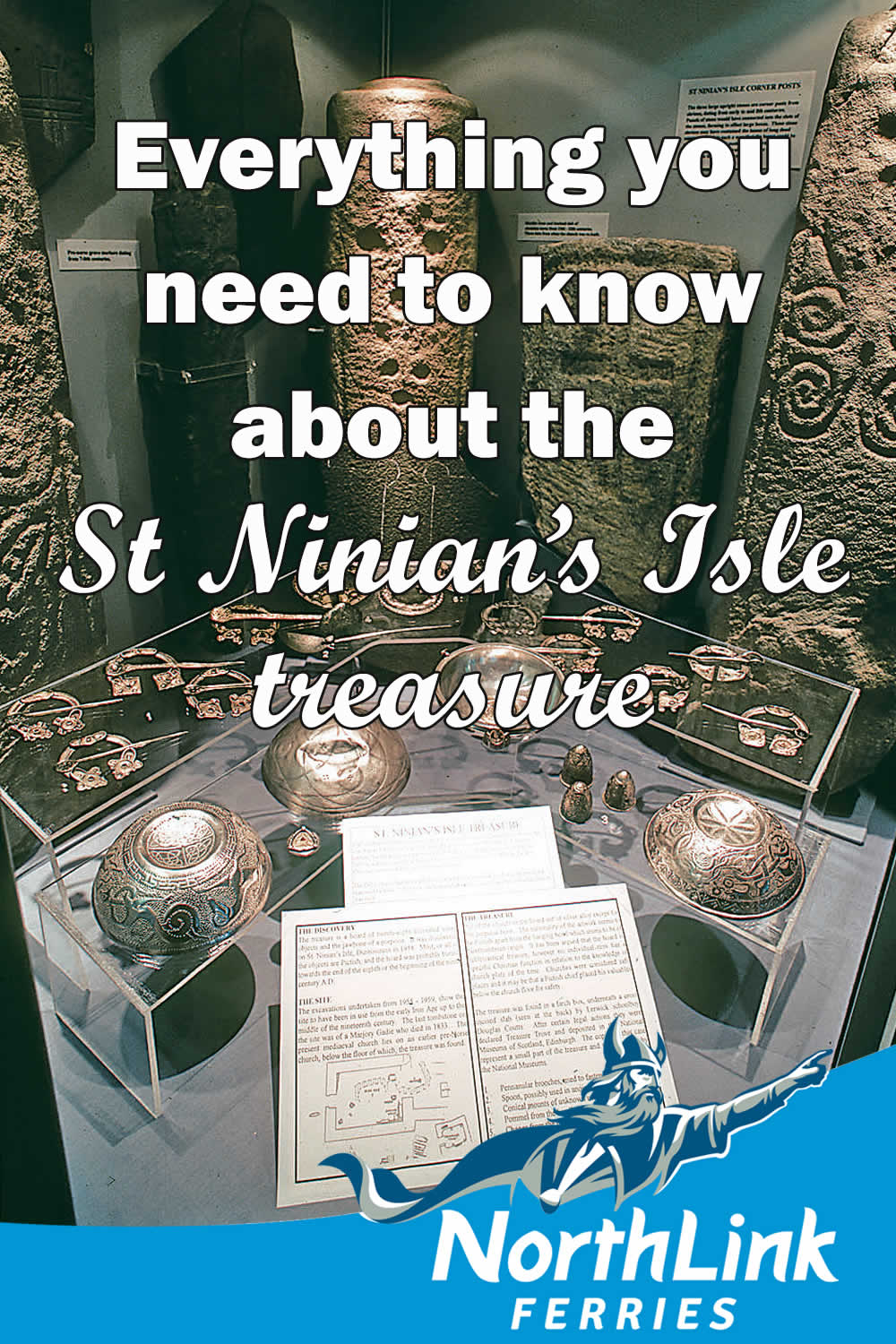Everything you need to know about the St Ninian’s Isle treasure
St Ninian’s Isle is probably Shetland’s best-known beach. Its iconic image is found in most brochures and internet searches for places to visit in Shetland, and rightly so.
Schoolboy Douglas Coutts had joined a team from the University of Aberdeen excavating the medieval church and burial ground at St Ninian’s Isle. On his first day he was was sent away to a corner of the site, away from the important work of the ‘real archaeologists’. It wasn’t long before he unearthed one of Scotland’s most significant treasure hoards!
St Ninian’s Isle beach is a picture-postcard pristine white sand tombolo linking the Shetland Mainland to the uninhabited St Ninian’s Isle.
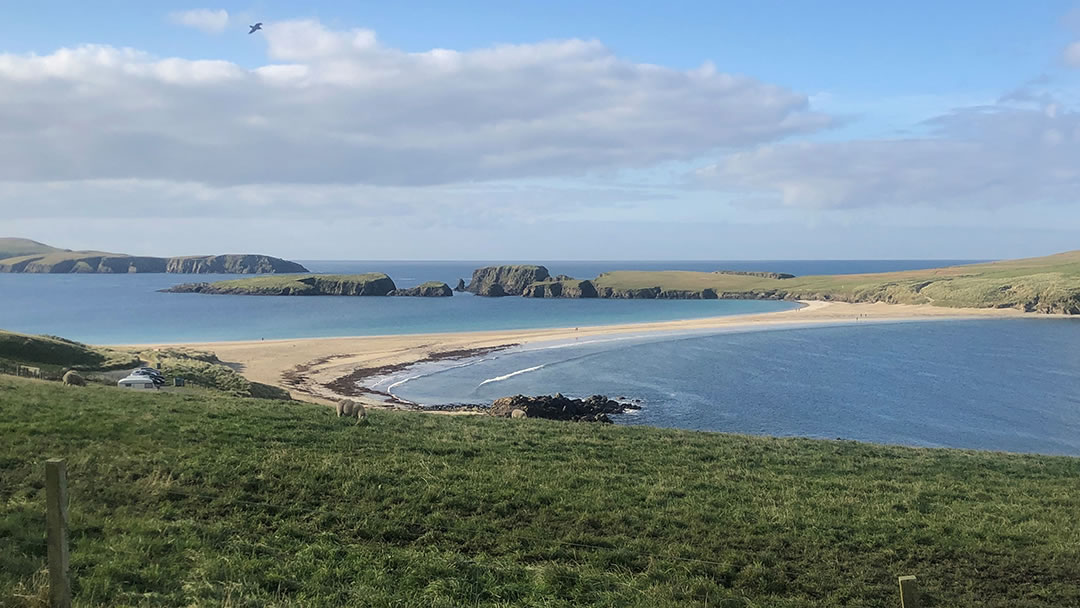
Perhaps less well-known is the incredible treasure hoard discovered on St Ninian’s Isle in 1958. The beach, surrounded by some of Shetland’s best farmland and tucked away on the west coast of the South Mainland with views across to the island of Foula, which dominates the Atlantic horizon, leads to St Ninian’s Isle, famous for its 12th-century chapel site and the incredible discovery of one of Scotland’s most significant Pictish treasure hoards: the St Ninian’s Isle treasure.
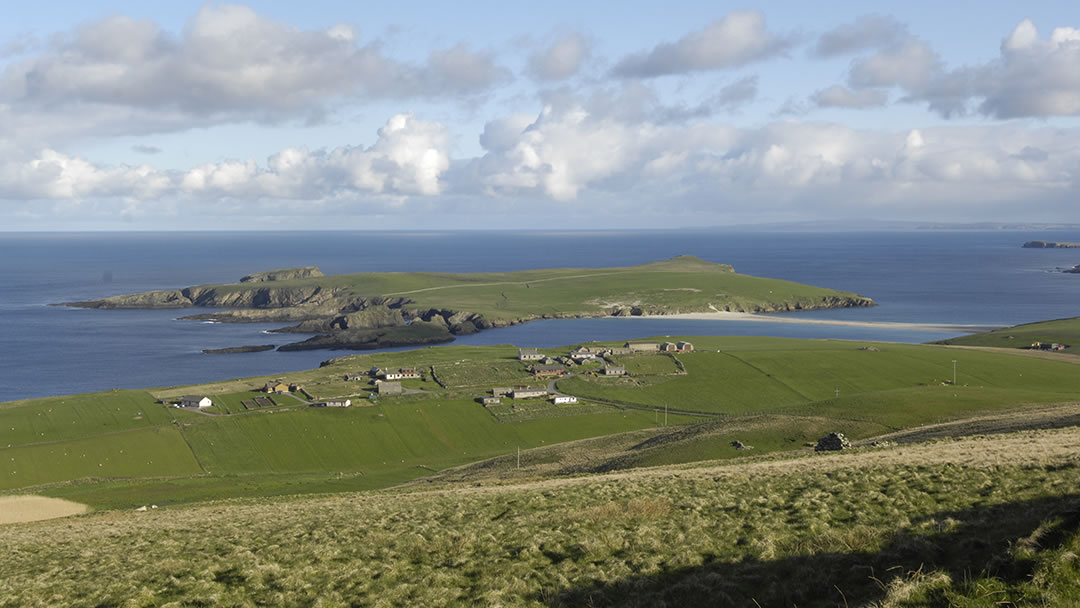
Getting to St Ninian’s Isle is easy. From Lerwick, follow the main A970 south towards Bigton. A limited bus service operates to the village of Bigton, just a short walk from the beach. From Bigton, follow the signs that point towards the beach.

Park in the car park next to the beach and cross the sand to get to the island. The island is generally always accessible, although sometimes, the sea will wash over it in winter storms or when there are particularly high tides. This is not usually a concern in the summer months.
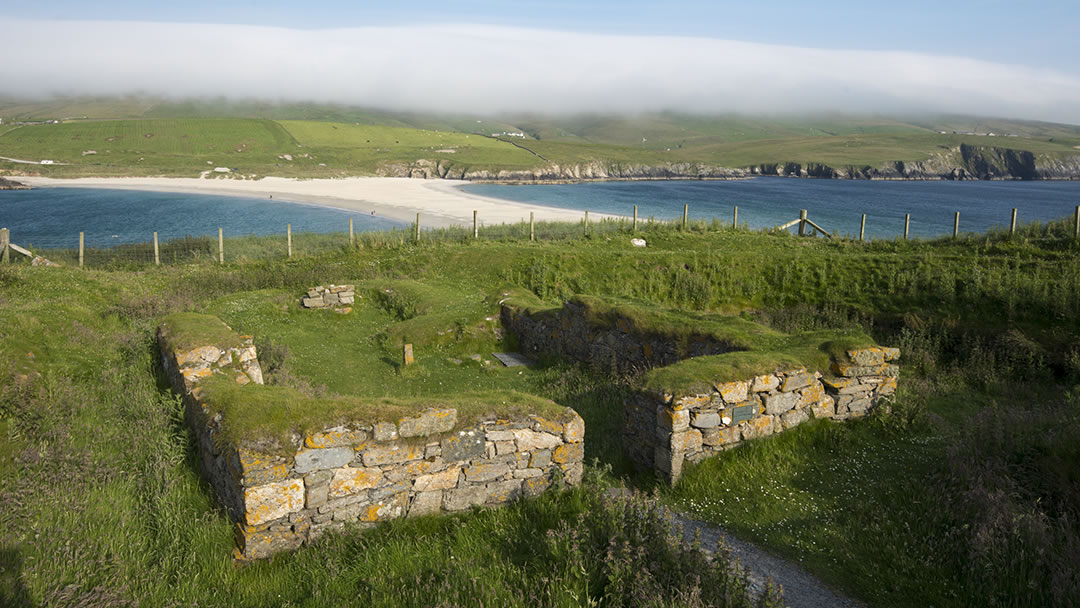
The 12th-century chapel site where the earlier treasure was discovered is easily found on the island as the original church’s ruins are fenced in against the burrowing rabbits, and there are interpretation panels that fully explain the site.
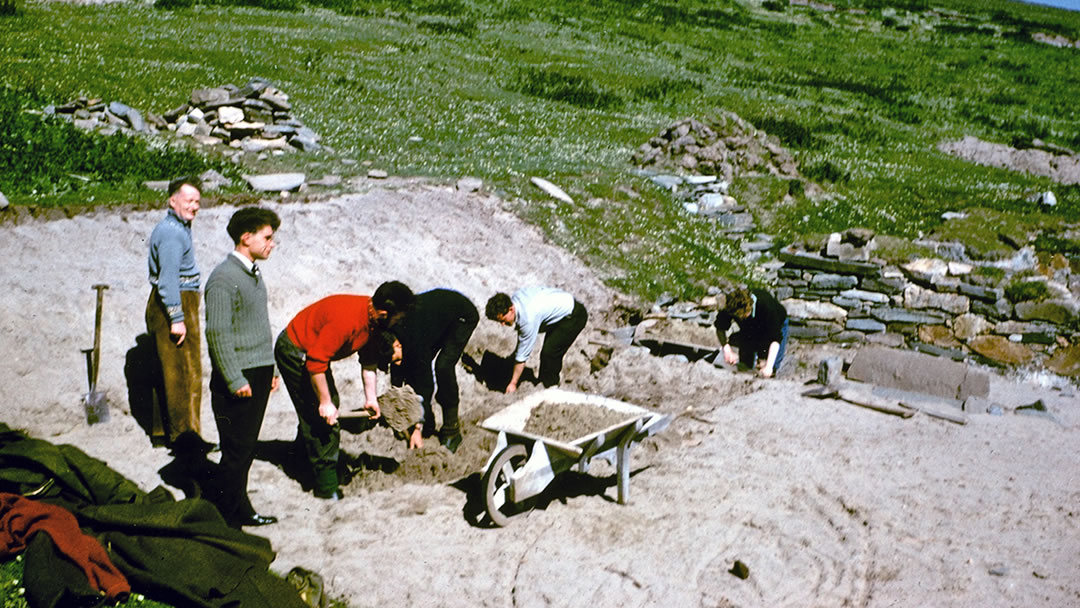
The chapel ruins are where, in 1958, schoolboy Douglas Coutts discovered the St Ninian’s Isle treasure hoard. He had joined a team from the University of Aberdeen on a dig led by Professor O’Dell at the 12th-century site on the first day of the summer holidays and his first day on the dig site. He was sent away to a corner of the site, away from the important work of the ‘real archaeologists’, and was handed a trowel – the spade used by archaeologists – and set to work digging.
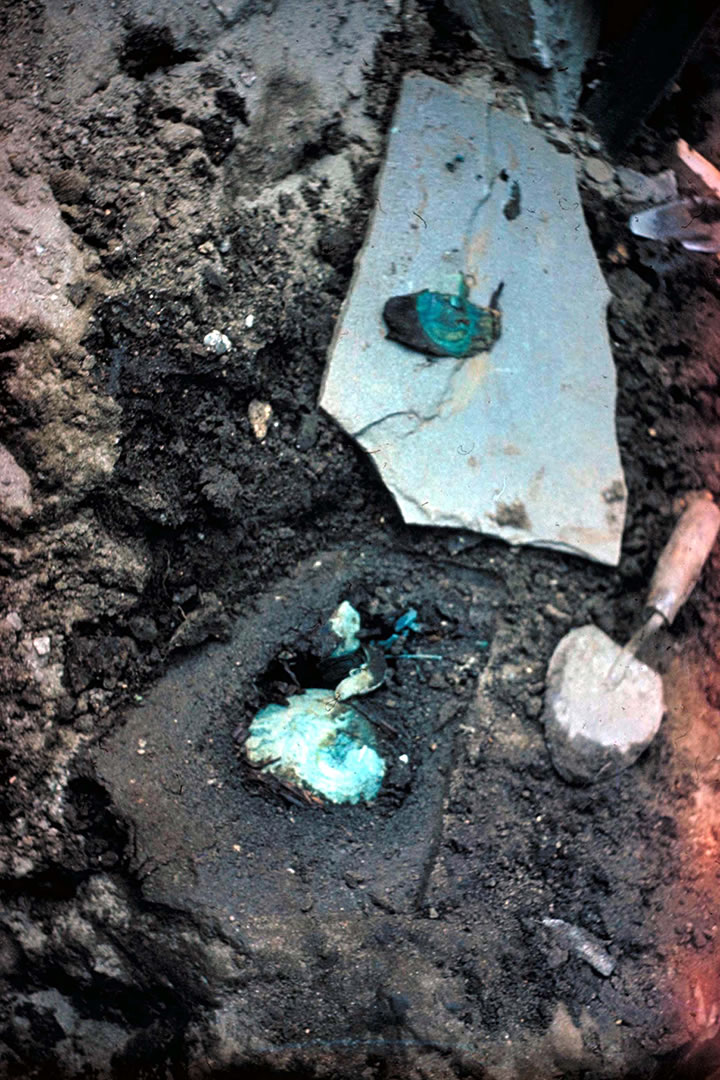
It wasn’t long before he unearthed a cross-marked slab. When the slab was removed, it revealed an upside-down larch box. The excited team discovered one of Scotland’s most significant treasure hoards inside the box.
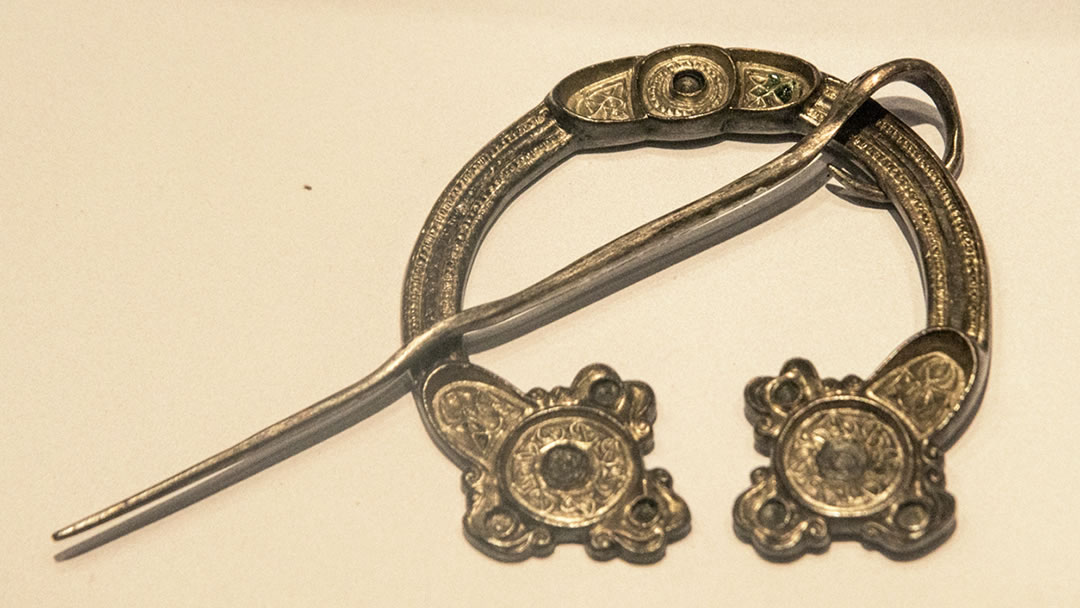
The hoard comprises twenty-eight pieces of highly decorated silverware (the main items are brooches, bowls and parts of weapons) and a fragment of a porpoise’s jawbone. It is thought that the treasure is Pictish and dates to about AD 800. It was buried in a larch box (a type of tree that did not grow in Scotland or Shetland then) and uncovered in the later 12th-century chapel under the church’s nave. It is generally believed that the treasure was buried below the floor of an earlier chapel.
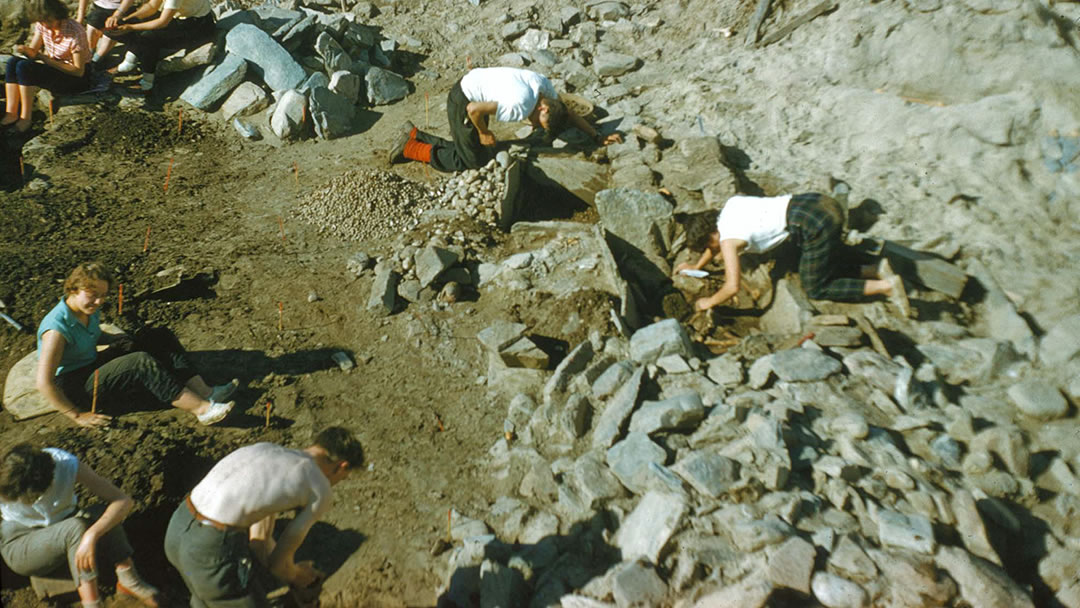
It’s not known who owned the treasure or why it was buried. At first, the items were considered religious items. Still, as people began to understand the pieces better, they were believed to be personal household items belonging to a Pictish lord. Burying important items was the best option to keep them safe in times of stress. Perhaps it was buried hastily, which may explain why the treasure was upside down. One of the seven bowls was a hanging bowl, most commonly associated with Anglo-Saxon England.
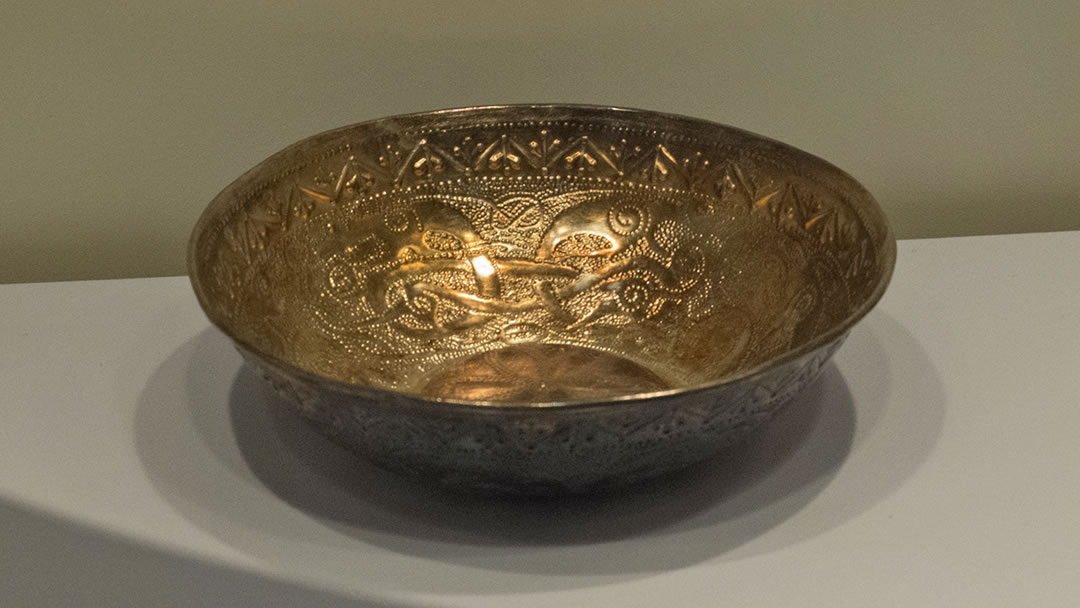
But who were the Picts? Known as the ‘Painted People’, the Picts were a group of people who were native to the north and east of Scotland. In Shetland, they are thought to have been the indigenous people who adopted the ideas of the Picts. It was the exchange of cultural ideas and beliefs rather than incoming people. We don’t know if the Picts hid the treasure from the Vikings, but we do know that the Vikings were already raiding Scotland when the treasure was buried, and they may have been scouting around the isles at the time of burial. Again, these are questions which remain unanswered.
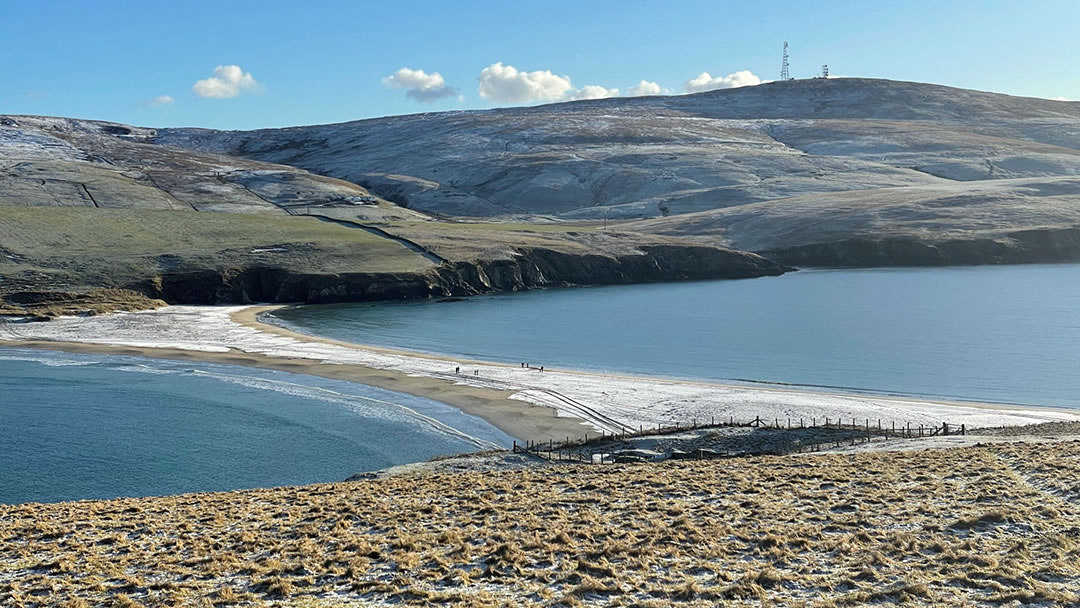
Treasure aside, the area makes for a fantastic circular walk which will take 2-3 hours to complete. The tombolo, or ayre, was formed following the last Ice Age as sea levels rose and the sea deposited sands and sediments. There are impressive dune systems at either end of the sand with marram grasses and a plethora of wildflowers in the calcium-rich sandy soils.
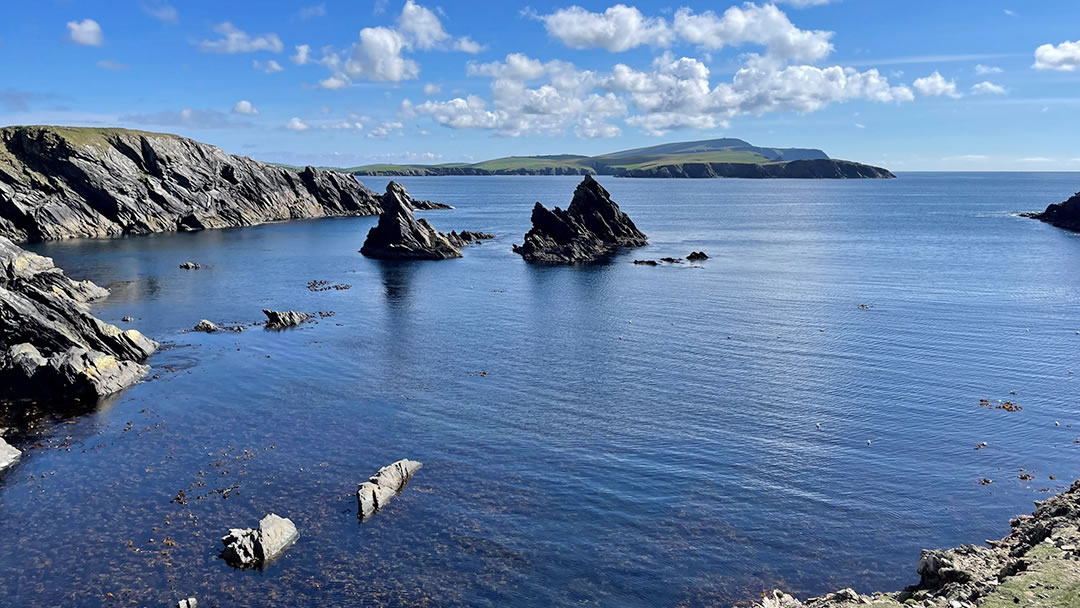
On the island, walk to the southwest corner for some stunning views towards Fitful Head. From here, an access path will take you around the isle, passing the impressive Hich (High) Holm, an important breeding ground for kittiwakes, and on to Selchie Geo. Selkie is the Shetland name for a seal, and, as expected, you can often see seals bobbing around in the inlet.

This is also a fantastic place to watch fulmars soar in the thermals. Following the coast, the path leads around Loose Head and back along the island’s eastern fringes, where you’ll reach the Chapel site and the way back to the beach once more.
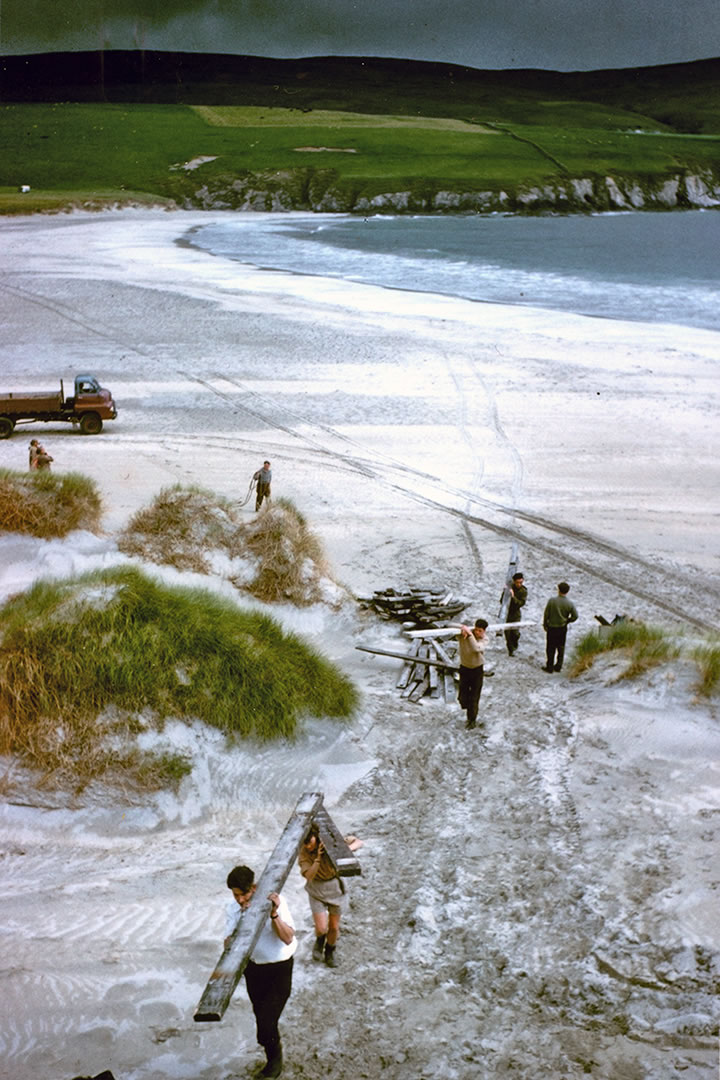
Professor O’Dell and his team worked on the site between 1955 and 1959. The initial work aimed to examine the medieval church and burial ground, and they had no idea a Pictish treasure hoard would be buried within it. Today, the treasure remains a beautiful, unanswered mystery; the story of the treasure, its owners and why it was abandoned are locked into the past, forever feeding visitors’ imaginations. All we can do today is surmise, admire and revel in the incredible craftsmanship of these intricate treasures, which remained hidden from sight for centuries.
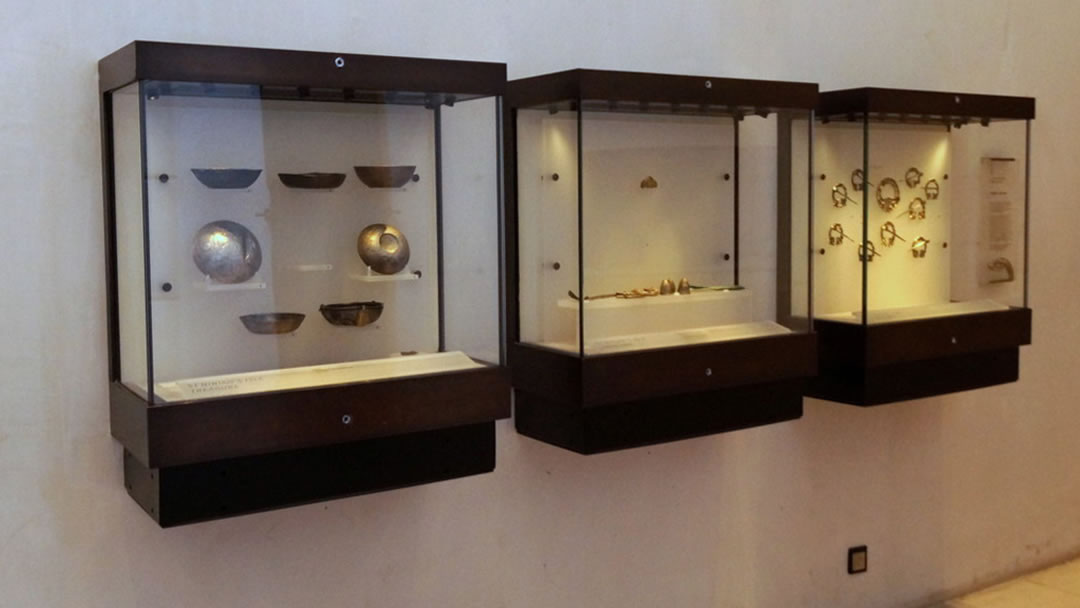
The iconic St Ninian’s Isle treasure, now on display in the National Museum in Edinburgh, is a collection of national importance. Replicas can be seen on show within the Shetland Museum & Archives, and the site of its discovery is just a short walk over one of Shetland’s most beautiful beaches.
 By Laurie Goodlad
By Laurie GoodladBorn and raised in Shetland, Laurie loves the unique history and culture there so much that she started her own tour company offering visitors the chance to see the isles through the eyes of an islander. Find out more at www.shetlandwithlaurie.com
Pin it!
